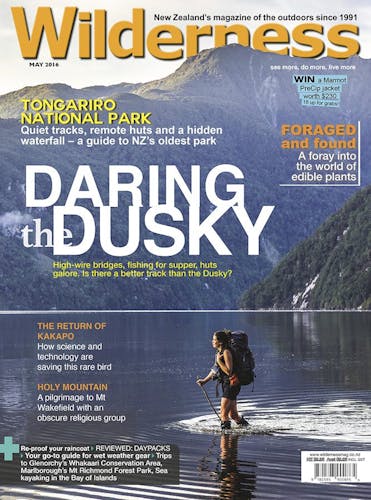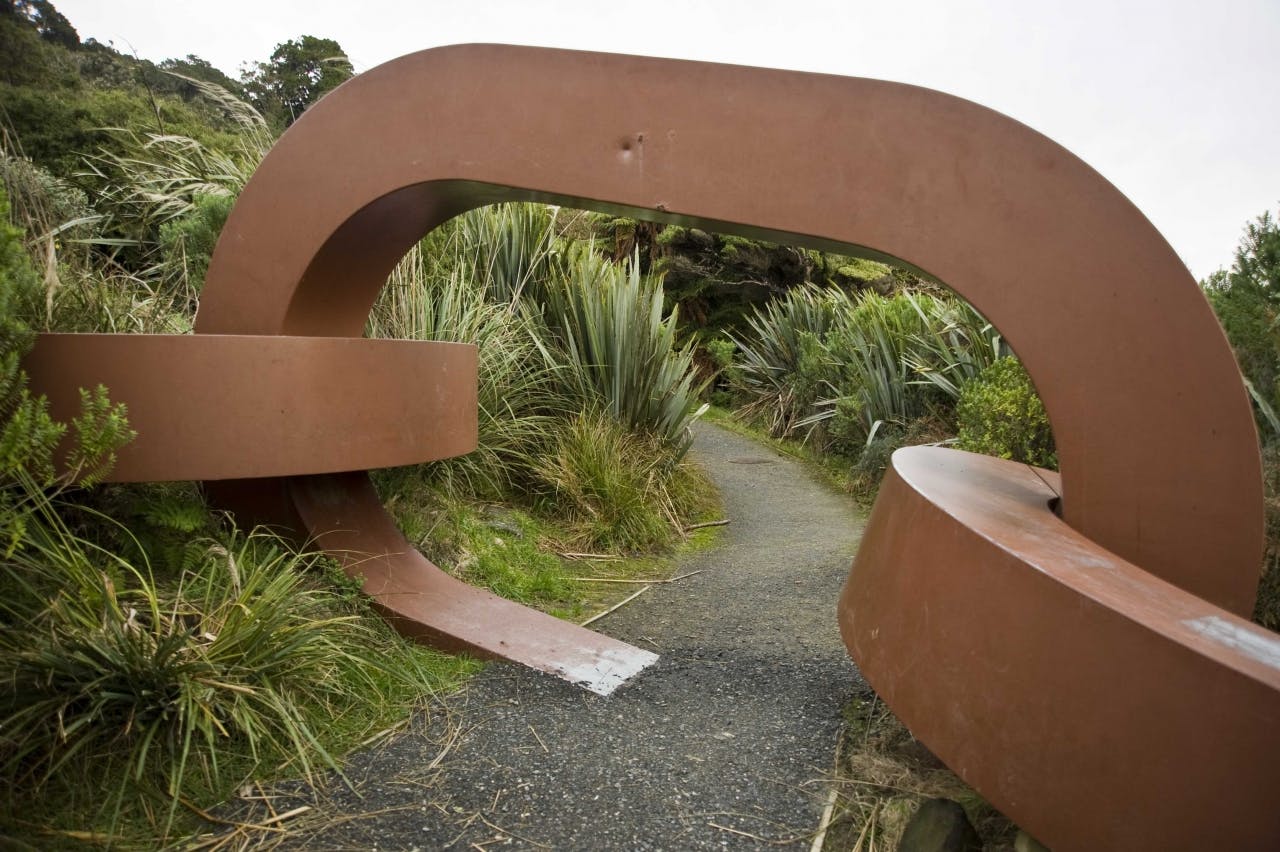Several of our national parks feature sculptures, plaques or monuments that commemorate important events.
1. Tongariro National Park
Outside the Tongariro National Park Visitor Centre is a large volcanic rock, dedicated in 1998 when Tongariro became the first national park in the world to receive dual World Heritage status for both its natural and cultural values.
Representatives from several iwi attended the memorable and moving celebration to mark this occasion, and each brought a rock from their own maunga. These rocks were together interred into a large rock from Tongariro, beneath a commemorative plaque outlining the area’s history as a national park – which, of course, was New Zealand’s first.
2. Abel Tasman Memorial, Abel Tasman National Park
Dutch navigator Abel Tasman was the first European explorer to reach the islands of New Zealand and record his experiences. Cultural misunderstanding and bloodshed marred his brief encounter with the tangata whenua of Golden Bay.
When Abel Tasman became the country’s fourth national park in 1942, this elegant monument was unveiled. The celebrated modernist architect Ernst Plischke, who had migrated to New Zealand to escape Nazi occupation of his homeland, designed it. The monument, accessible from near Pohara Beach, sits on a prominent limestone outcrop and is reached on an easy five-minute track, where a platform affords a view over the Tata Islands.
In 1992, Dutch monarch Queen Beatrix visited and re-dedicated the monument.
3. Dobson Memorial, Arthur’s Pass National Park
Near the summit of Arthur’s Pass, a prominent stone monument stands as a tribute to the efforts of pioneering surveyor and explorer Arthur Dudley Dobson, who was part of the push to find a suitable road route across the Southern Alps from Canterbury to Westland.
In 1864, he made an arduous journey along the well-known Maori trail over the Alps at what is now known as Harper Pass, then forged up the Otira River, in search of a lesser-used Maori route through the valley. Although Dobson considered it unsuitable for a road route, his engineer father Edward eventually decided it would work, as it was much more direct than Harper Pass.
Construction of the road occurred between 1864 and 1866, costing several lives. Later in life, Dobson was a firm proponent of protecting the surrounding mountains as a national park, which finally became a reality in 1929. It was our third national park and the South Island’s first.
4. Lee Bay, Rakiura National Park, Stewart Island
When Rakiura became New Zealand’s 14th national park in 2002, the opening was celebrated at Lee Bay, the northern gateway into the park, with Sir Edmund Hillary and Prime Minister Helen Clark attending.
To mark the event, a large sculpture of a chain link was commissioned, which represents Maori tradition about the origins of Rakiura as the anchor stone of Maui – Te Puka a Maui – used to secure his great canoe, Te Waka o Aoraki. The chain also symbolises the connection between the people of Rakiura and Motupohue/Bluff.
Through this chain, walkers embark on the first leg of the Rakiura Track, or the Northwest Circuit.








